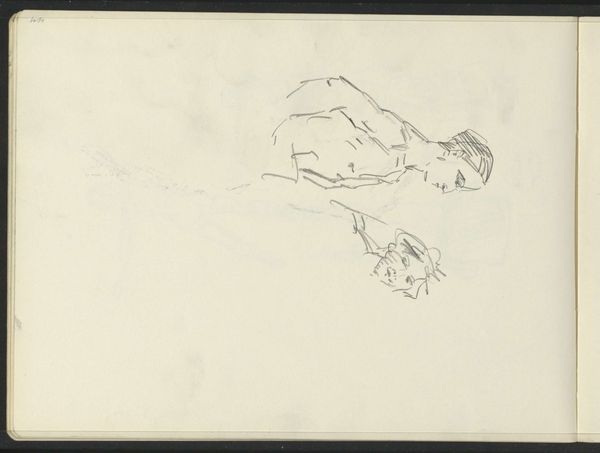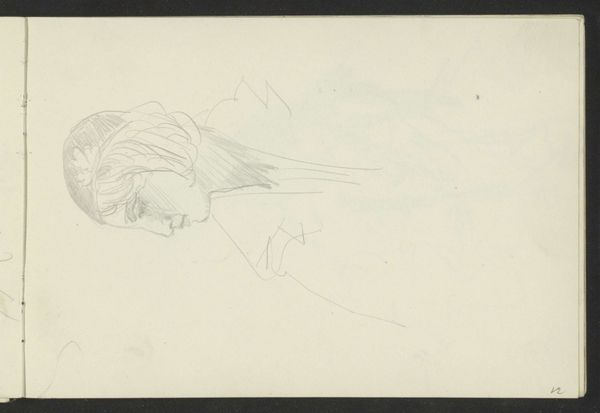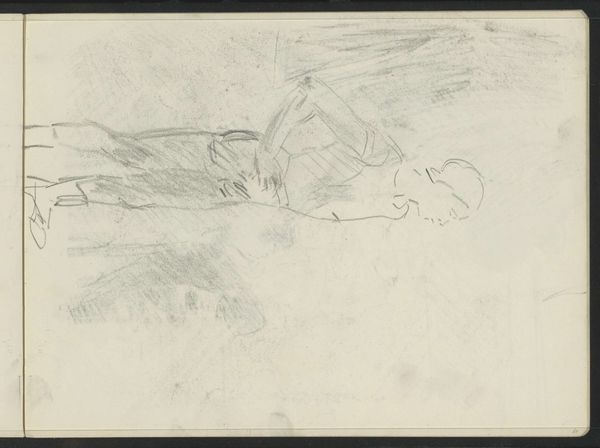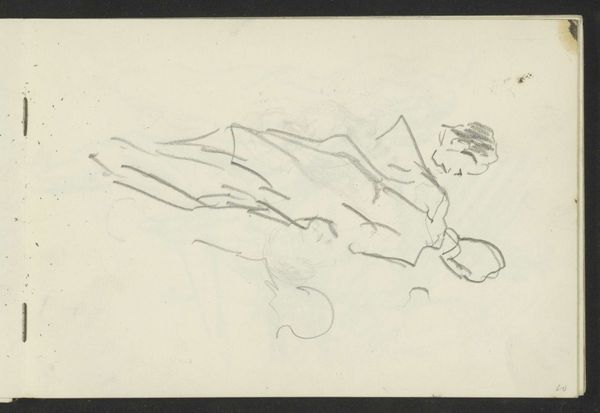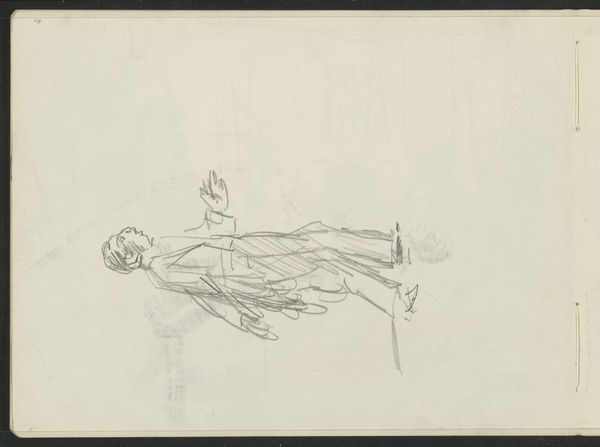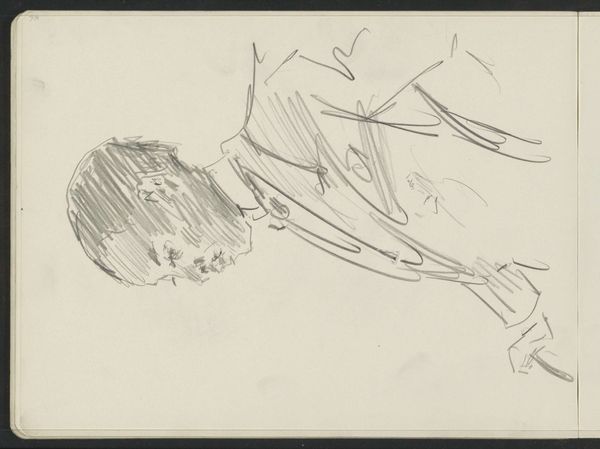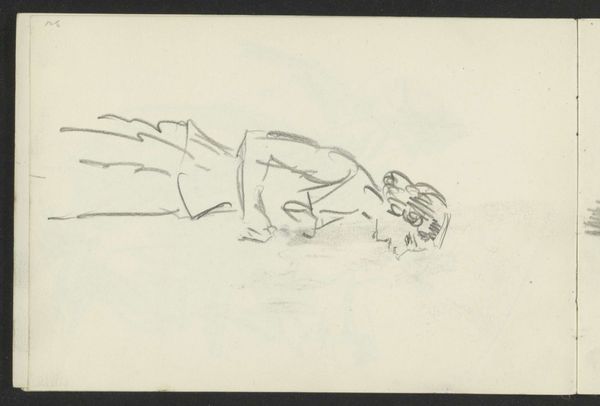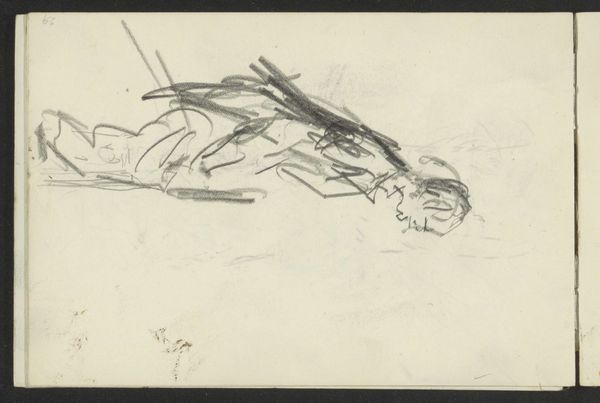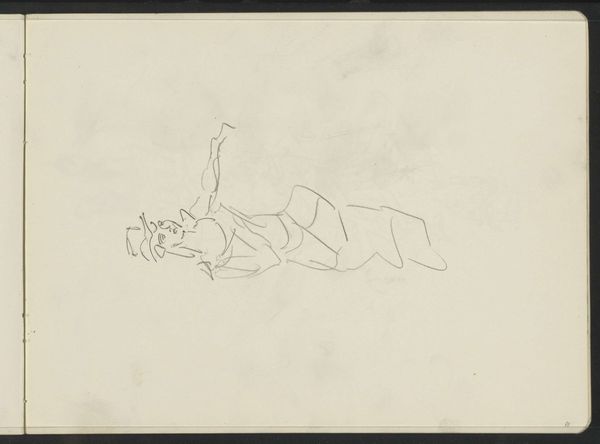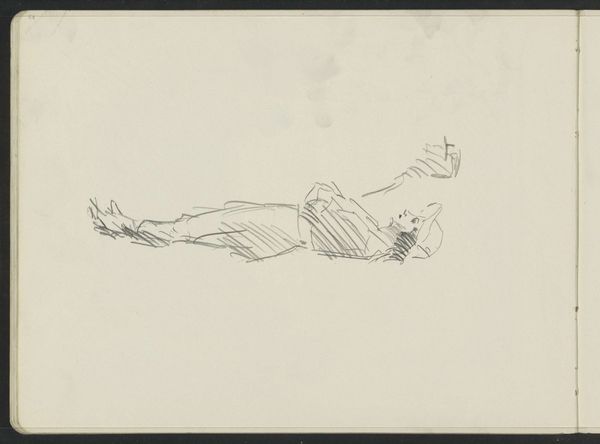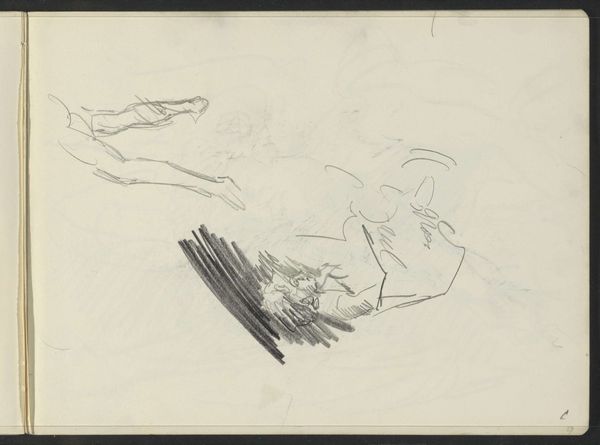
Copyright: Rijks Museum: Open Domain
Curator: Before us, we have "Standing Man, in Profile," a drawing by Isaac Israels. It's believed to have been created sometime between 1875 and 1934. The work is done in pencil, featuring delicate line work. What's your initial response to this image? Editor: Stark. Sparse, almost to the point of being unfinished, but also incredibly intimate. The minimal lines make me feel like I'm peeking into the artist's private sketchbook, witnessing a fleeting moment of observation. Curator: I agree with that sense of intimacy. The seeming immediacy aligns well with Israels’ involvement with Dutch Impressionism, seeking to capture momentary glimpses of modern life. The quick strokes and the unassuming nature of the medium create an accessible feeling. What symbols or archetypes emerge for you in viewing this figure? Editor: Well, the bent posture carries weight. I see the archetype of weariness, perhaps the burden of labor, the weight of the world on his shoulders, however temporary. It makes me think about the lives of ordinary people in his time. I want to know about their stories. The drawing serves as a poignant reminder of how social realities shape artistic representations. Curator: And considering the era during which Israels was most active, his sketches often depicted the working class. It highlights the democratizing tendency within Impressionism itself. It suggests an openness to representing subjects that academic art traditions may have considered unworthy of attention. This would include female factory workers, street vendors, even this anonymous standing man, perhaps caught unaware in a private moment of introspection. Editor: Precisely. Beyond the symbolism, the technique itself bears mentioning. The reliance on lines is almost calligraphic, yet it still captures the essential human form with surprising accuracy. The visual narrative of each stroke is almost musical; quick notes dashed across a page. This contrasts so heavily with more staged, painterly depictions, underscoring that sense of genuine observation again. How would you position this drawing relative to more finished, formal portraits in art history? Curator: In my estimation, it acts as a counterpoint. The reduction to essence challenges conventions around idealization or formal presentation. It reminds us that representation can happen through suggestion as well as detailed replication. I would say it encourages viewers to consider the myriad approaches available to artistry. Editor: It certainly inspires a thoughtful pause. Seeing the personhood conveyed here in so few lines, invites us to ponder art’s accessibility, how we might see others, and maybe even see ourselves a little differently, too. Curator: Well said. Thank you, these fresh impressions have helped contextualize this powerful sketch!
Comments
No comments
Be the first to comment and join the conversation on the ultimate creative platform.
